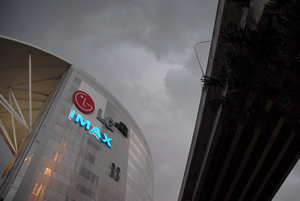almost a month later. in the middle of a conference. mapping transitions. academic discourse. so. stream notes. what do pictues want? god is an artist. reductions (models, models, models, built on each other, intertwined. biocybernetics. science/technology making bio-sciences possible. cloning and computers. extended sense. political economy that runs the world. world of computer station, tangled wires. cybernetics: the steersman. kybernaut. writing as control system. not law, but the actual technologic/semiotic (phonetic) tools. (code writers). conflict of visual orgy and at the time of triumph of the digital (logos). analogical arguments. (dominant). terminator of liquid metal. ultimate simulator. academicians desperately searching for a label. an interpretive system to decode what the hell is going on. building a new model with old embedded pieces which have no inherent difference in structural predicate. sa-mo, sa-mo. formative paradigms are old. 1) copy original 2) artist and work (subject:object) 3) temporality (remember Virilio, huh?) 4) time of gain. uniqueness. copy has more aura than original.
enhancements of amplification (reproduction): are they qualitative improvements? reproductive cloning — an improvement?
actual and mediated. (electronic media is given a certain status of unprecedented power.) “new media.” participates in “massaged” production. mechanistic view. the aesthetics of digital media? (what about defining what the hell “digital media” is? (instead of defining it’s “fit” into the hegemonic/dominant worldview). hybrid aesthetics? why not just toss it out…? simulation. materialistic presence. current, seeking closure in the circuit. remix, unlocking input and output authenticity. (digital images and digital culture and rituals of new media). new vs traditional: imitations. virtuality. ontological status. proper character. procedural, conceptual (don’t fit…). anti-materialist. (medium is not the point). thesis-antithesis. we’re not allowed to make progress? hierarchies of form. perfection of expression. useful ways to talk about objects. (and subject experience). taste. rational cultivation. descriptive systems assume static forms of … aesthetics of change. mechanistic production. potential literature. procedural methods. with certain sensibilities. floods of wards. static bodies in space. reading texts. monolithic and reified forms of presentation. (any tweaking of of meta shakes the whole tree, gimme a chain saw). key forms of reference — generative: Pannini, Turing, Babbage, procedural, Stockhausen, and so on. iterative. new objects. rethink premises of knowledge production. aesthetics is about awareness. (iterative), step beyond — in flux. two feet in the mechanistic…
swarming
taking quantum to its conclusion — points to a movement from product to process to practice — (Saskia Sassen — the “meaning” of the activities in the digital sphere is the total accumulation of all practices that take place in that space … MAKE THE LEAP…
anthropological centrism. mapping transitions. (remembering the new world order is a limited access, top of a hierarchical high). indigenous technology. Inuit Broadcast Corporation. media-maintenance. next5minutes comes up, tactical media. good topic.
reproduction (gathering and redistribution of original energized event creates a pseudo-powerful illusion, but this is purely illusion based on the hegemonic (and static) position of the “reproducer” within an implied “global” order … the photograph in the world order (re-radiated Light from the self.) … some forms of hypertext with image are nice, but. just ’cause it’s horizontal?
Anyone who has common sense will remember that the bewilderments of the eyes are of two kinds, and arise from two causes, either from coming out of the light or from going into the light, which is true of the mind’s eye, quite as much as of the bodily eye; and he who remembers this when he sees anyone whose vision is perplexed and weak, will not be too ready to laugh; he will first ask whether that soul of man has come out of the brighter life, and is unable to see because unaccustomed to the dark, or having turned from darkness to the day is dazzled by excess of light. And he will count the one happy in his condition and state of being, and he will pity the other; or, if he have a mind to laugh at the soul which comes from below into the light, there will be more reason in this than in the laugh which greets him who returns from above out of the light into the den. — Plato’s Cave
caves, CAVES, and caves. technocracy. aristocracy of technology. networks of expensive, institution-oriented situations, (isolated from the Light, Light re-amplified, reflected, refracted, energized). “gotta have content.” flippant sycophant, mouthpiece of the complex. access. high-end polarity. slick-packaged technological. famous last words. manipulation and collaborative interaction. glib passing over any moral embeddedness of the power structure. fair use. attitudes of use.






 Illustration of a Julia Set by Scott Hotton. Dynamical Systems Theory (a branch of mathematics used to describe the behavior of complex systems by employing differential and difference equations) is another limited framework for modeling complex systems. More accurate than linear and non-linear models, but none-the-less reductionist. (Well, talk about restating the obvious when it comes to anything mathematical, as the concept itself is a reduced language for expressing natural phenomena — I don’t subscribe to the early Greek concept where mathematics does not represent but is a universal and perfect thing unto itself). While human-generated system solutions (say, engineering problems such as placing satellites into orbit) are solved through classic computational modeling with linear systems, natural systems like the brain need something more.
Illustration of a Julia Set by Scott Hotton. Dynamical Systems Theory (a branch of mathematics used to describe the behavior of complex systems by employing differential and difference equations) is another limited framework for modeling complex systems. More accurate than linear and non-linear models, but none-the-less reductionist. (Well, talk about restating the obvious when it comes to anything mathematical, as the concept itself is a reduced language for expressing natural phenomena — I don’t subscribe to the early Greek concept where mathematics does not represent but is a universal and perfect thing unto itself). While human-generated system solutions (say, engineering problems such as placing satellites into orbit) are solved through classic computational modeling with linear systems, natural systems like the brain need something more.
